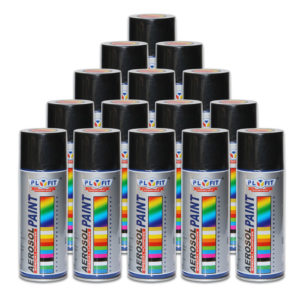How to Get Rid of Gnats
Gnats are tiny annoying insects that are most commonly found around windows, doors, houseplants or trashcans inside of the home. The problem that most homeowners face when attempting to eliminate a gnat infestation is properly identifying the cause.
One of the primary reasons that these pests can be difficult to track lies in the fact that they could actually be a number of different insects. What homeowners commonly refer to as gnats could conceivably be fungus gnats, black gnats, fruit flies or other small flies.
The fact that the gnats in any given home could be from any number of families or species with any number of different primary food sources can make the task of tracking down the source a challenge. And without having a very clear indication as to where the infestation is taking root can make prevention and elimination all but impossible.
First Steps to Eliminate Gnats
Getting rid of a gnat infestation requires diligence in order to identify all potential food, water and breeding sources. Homeowners need to look for any and all places that might be attractive to the pesky little insects in order to effectively manage and eliminate an infestation.
In order to combat an infestation of any species or family of gnats, a homeowner needs to focus beyond just the annoyingly swarming adults. Potential hot spots could be over ripe fruits and vegetables, damp or wet soil in houseplants, clogged or slow drains or other sources of standing water or indoor recycling containers.
Simply finding gnats in or around one source isn’t a reason to stop – kitchens, basements, bathrooms, sunrooms and laundry rooms should all be thoroughly inspected and cleaned in an effort to rid the home of potential sources for gnats. Countertops, floors, sinks and dishwashers should all be cleaned to remove anything that might be attractive to adult gnats.
Eliminating Issues in Kitchens and Bathrooms
Slow moving drains in kitchens, bathrooms and laundry rooms should be cleaned and cleared in order to eliminate issues with gnats. In some cases, this can be as simple as using a DIY remedy like pouring a small amount of ammonia down the drain and leaving it for a few hours to kill off the gnats living inside. Following up the ammonia with a few gallons of hot (not to the point of boiling) water down the drain to flush out any remaining organic matter can help prevent re-infestation.
In the event of more serious clogs that can’t be tackled with available household cleaners, a homeowner might need to remove the trap in order to physically remove the matter that gnats are attracted to. This is a bit more complex and messy than simply pouring liquid down the drain but it ensures that the residue that the gnats are living and breeding in will be removed on the first attempt.
Wastebaskets, recycling bins and vegetable storage bins should also be examined and cleaned. Any organic matter from ripening fruits or vegetables left in the bottom of storage bins, liquid from juice or wine bottles or jars or food waste on the lids of trash cans can be very attractive to gnats. This presence of food, no matter how small, can cause these pests to congregate and start the breeding cycle, which could result in a serious (and seriously annoying) infestation. Clean out and wash all trash receptacles and produce bins and baskets and possibly reconsider their placement until the infestation has been handled.
Proper food storage is also a big issue when dealing with an infestation of gnats. Move bananas, peaches, pears and other fruits; potatoes, onions and other vegetables in the refrigerator in order to keep possible food sources inaccessible. When fruits and vegetables become ripe they need to be used and any peels, cores or scraps need to be disposed of and trash bags need to be taken outside to remove food sources from the inside of the home.
DIY Control Methods
Fungus Gnats
The soil in houseplants is a common breeding and feeding ground for fungus gnats. If a homeowner sees swarms around indoor plants they might need to evaluate their watering methods or strategy to reduce the attraction to bugs.
Letting the soil of the plant completely dry out in between watering is the first step in discouraging fungus gnats from infesting plants. If the infestation from plants seems serious, replacing the soil or throwing away the infested plant might be necessary to effectively combat the problem.
Swarming Gnats
While DIY traps won’t kill the eggs or larvae, they will do the next best thing – eliminate the adults who are capable of reproducing. A funnel or vinegar trap crafted from a drinking glass or Mason jar, liquid bait (vinegar or wine) and a paper funnel or plastic wrap. This simple trap can effectively lure in all adult gnats in a given area eliminating the potential for breeding.
Pre-made traps can also be purchased in stores and used around areas where gnats have been seen swarming to capture and kill adults.
Preventing Future Infestations
Keeping gnats in the great outdoors is much easier if a homeowner is proactive about cleaning and maintaining any areas with organic matter. Keep trashcans clean, do dishes promptly and clean up spills quickly and thoroughly to eliminate potential food sources for gnats. This will keep them from entering and taking up residence inside of a home. Eliminating potential sources of standing water (slow draining sinks, dripping pipes, overwatered houseplants, etc.) can also eliminate sustenance that could potentially draw these pests into a home.
Getting Additional Help
Even homeowners who are particularly diligent about things like cleaning and maintenance can sometimes encounter an infestation that proves too much to handle. When a homeowner just can’t seem to get the gnats (or other household pests) under control it makes sense to enlist the help of a pest control professional.
A licensed and experienced exterminator knows exactly where to look in order to find the most likely causes of an infestation. Beyond that, these pros also have the tools necessary to get to gnats in all phases of their lifecycle (egg, larvae and adult) so the infestation can be completely taken care of. Once the initial cause has been treated and the bugs have been fully eliminated it becomes much easier to prevent any future infestations.
Non Toxic Spray

This non-toxic spray kills larvae, eggs, and adult insects by breaking down their exoskeleton. It is safe to spray around the home and works only on the insects. Feel good about spraying indoors around pets, plants and children.
All Natural Non Toxic Insect Killer Spray by Killer Green

